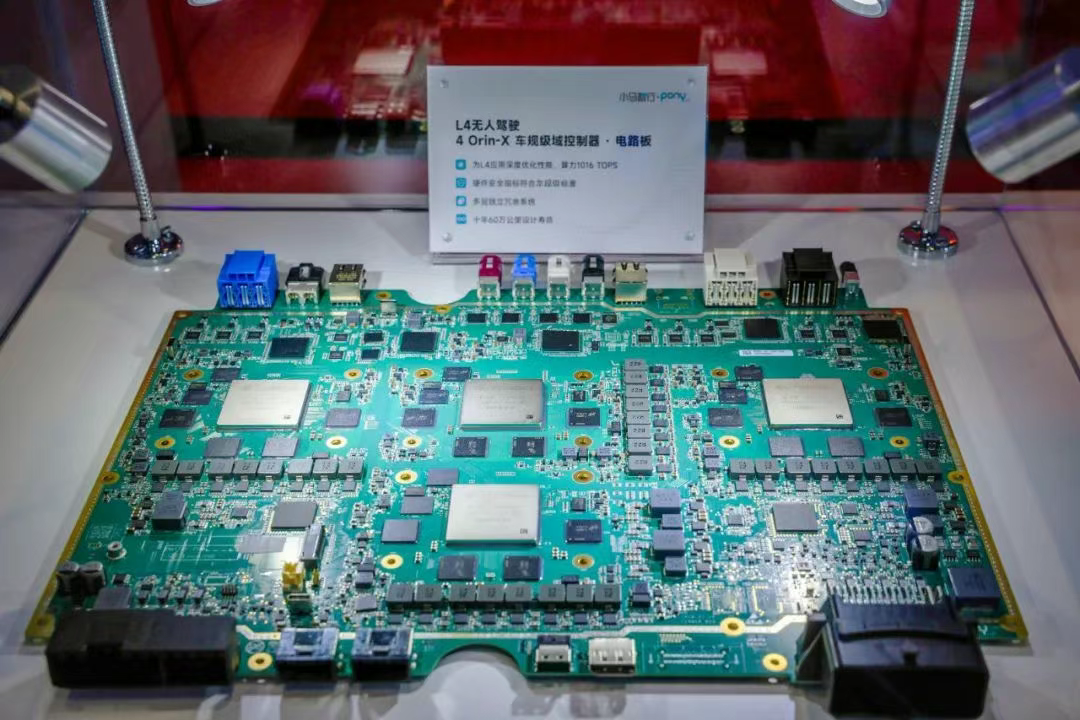On July 22, leading autonomous driving company Pony.ai announced that its seventh-generation Robotaxi, equipped with an L4 automotive-grade domain controller, has successfully completed over 2 million kilometers of road testing. This marks a new phase in the mass production of global L4 autonomous driving technology. As the world's first L4 Robotaxi automotive-grade mass-produced domain controller, this innovative product from Pony.ai has attracted significant attention since its debut at the Shanghai Auto Show in April this year. The domain controller is independently developed based on four NVIDIA® Drive Orin X chips, offering a computing power of 1016 TOPS, providing a scalable, automotive-grade, high-safety computing foundation for the seventh-generation Robotaxi. The main system uses three Orin X chips, while a redundant system includes one Orin X chip, ensuring high reliability and stability. Pony.ai has customized the domain controller through a collaborative design of hardware and software. While meeting the overall system and functional requirements of the fully autonomous Robotaxi, as well as the performance and safety requirements of L4 software algorithms, the domain controller has achieved significant optimizations in size, weight, power consumption, and cost. Compared to the previous generation, the domain controller's cost has decreased by 80%, and its design life has been extended to 10 years or 600,000 kilometers, effectively reducing the total cost of ownership and paving new paths for the commercialization of autonomous driving technology. This domain controller integrates various sensor and functional components required for the Robotaxi vehicle, such as system power management, interactive screen control, external microphones, warning light controllers, gateways, and GNSS (satellite positioning modules), and is equipped with a self-designed multi-chip scheduling coordination and communication system. The high-integration design keeps the main and redundant systems independent, balancing cost and safety while reducing hardware components and wiring, thus lowering the probability of failures and improving mass production efficiency. Additionally, the domain controller supports both circulating liquid cooling and passive heat dissipation modes, ensuring that in the event of a liquid cooling system failure, the redundant system can still ensure the vehicle safely pulls over. In terms of safety performance, Pony.ai adheres to the core value of "safety first." The domain controller ensures that in the event of main system failure, the vehicle can switch to the redundant system or MRCC (Minimum Risk Condition Control Unit) for safe control through multiple heterogeneous architecture, diagnostic monitoring systems, and safety mechanisms, along with an independently operating redundant system and multiple safety degradation modes. Even if the main system's power or chassis communication links fail, the redundant system can maintain blind-spot-free perception and high safety driving capabilities, autonomously navigating complex road conditions and safely pulling over when necessary. In the first half of this year, the seventh-generation Robotaxi equipped with this domain controller has successfully passed functional tests and inspections required by regulators in multiple locations, obtaining road testing permits for L4-level autonomous driving in several first-tier cities. With the mass production of the seventh-generation Robotaxi, Pony.ai plans to establish a fleet of over a thousand vehicles within the year, aiming to achieve economies of scale and provide high-quality travel services to users in more regions.
Pony.ai's 7th Generation Robotaxi Achieves 2 Million km Road Testing Milestone

Share this post on: